Tag: Legs
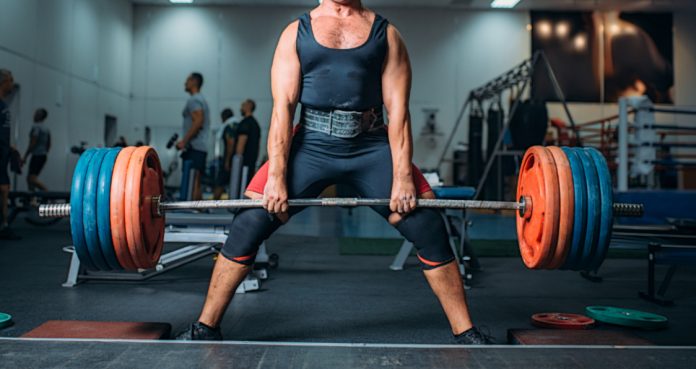
Top 6 Deadlifting Mistakes You Might Still Be Making
A change in bad habits leads to a change in life.
The deadlift is one hell of a monster workout. And as simple as it may look in theory, it is much more complex in practice. So how does a seemingly simple exercise leave so much leeway to do it incorrectly? Well, you’ve got to remember there’s a lot of moving parts. This exercise takes strength, coordination, and explosiveness, not to mention moving your bodies in ways that aren’t completely intuitive.
What many people forget is that the deadlift is a FULL body exercise. It’s not just engaging your legs but everything from your feet, to your core, to your shoulders. Many trusted fitness advisers have repeatedly said if they had to choose anyone exercise to do for the rest of their lives it would be the deadlift.
With all that movement it’s no wonder this exercise is so commonly performed incorrectly. This could lead to wasted gains and, even worse, injuries that keep you out of the gym. So let’s put the problems to rest with these top 6 deadlifting mistakes that you might making without even realizing it.
6. Rounding your back
This is by far the most common mistake we’ve seen by newbies and even some higher level lifters if they’re getting lazy. You don’t want to round your back or overcompensate by arching either. You want a flat back from the back of your head to your caboose. Instead of looking at the bar or at the ceiling try picking a spot a few feet in front of the bar and focusing on that throughout the lift.
5. Jerking your deadlifts
A lot of times guys get a hard on with deadlifts. They see all that weight and their emotions start to rise. They want to tackle it like Jenny Spinelli on prom night. While we’re all about getting in touch with your primal side, we’re going to recommend a controlled craziness on this one. Though you do push massive weight – this is actually a controlled exercise best performed with the arms locked. Try to keep everything tight and think of slowly pushing the floor away. Remember it’s a full body exercise, your arms are used as a lever.
4. Turning your dead into a squat
Of course, we’re not talking literally – but a common mistake with intermediates and even some experienced guys, leaning back too far on the bar will turn your deadlift into a squat. To remedy this raise your hips so your shoulders are over the bar. Keep the bar over your mid-foot with back straight. You can make adjustments according to your limbs but it’s pretty hard to screw it up from here.
3. Leaning back at the top
When you lean back at the top of a rep it squeezes the disk in your lower back which can possibly result in injury like a herniated disc. Stop when you knees and hips are locked, nothing more, nothing less. Sure pro powerlifters might do it but this is to show judges they’ve locked out. Some UFC fighters also fight with their hands down but I wouldn’t recommend that either.
2. Shin crushing
Do you dread the deadlift not because of the weight but because of the pain of the iron crashing into your shins at the beginning of each rep? Well stop it, it doesn’t have to be that way. As we mentioned in “squatting your deadlifts” keep the bar over your midfoot. This should keep it close enough to move along your body but far enough to eliminate unnecessary pain.
1. Switching your hand grip too early
Yes, we know it looks cool and all your friends are doing it, but switching to an inverted hand grip can be potentially dangerous. Changing the arm position also changes the muscles being used on by your back. By changing to an inverted lift before necessary – it can tweak a muscle or cause lower back injury. Try to stick with a traditional grip as long as you can. When the weight gets higher and you do eventually have to change over be sure to wear a lifting belt and go up gradually.
Well there you have it. Now that you’ve corrected these common mistakes you should be deadlifting like a true pro in no time. Don’t say we never gave you anything. So what do you think of these common mistakes? Were you performing any of these? Did we miss any? Hit up the comments section below and put in your two cents.
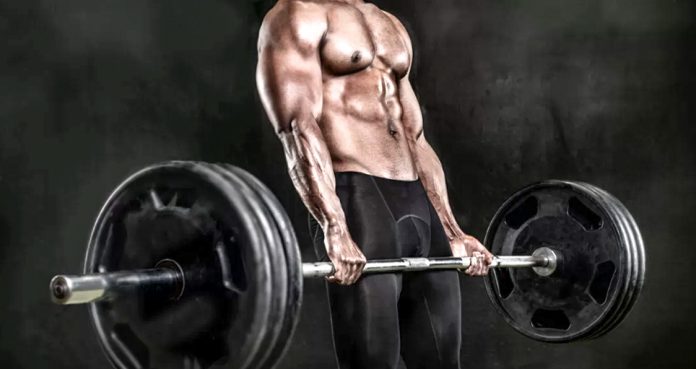
4 Exercises To Build Killer Hamstrings
Turn those hams into boars.
When it comes to building up the legs many people focus on the quads more than any other muscle group. Though the leg is comprised of a number of muscle groups including the calves, quads, and hamstrings, it seems that most of the attention is given to the muscle group that you’d see most readily in the mirror. It’s not so farfetched as many beginners often focus on the parts they can see rather than the entire body as a whole. But if you want to have a symmetrical and aesthetic physique you’ll have to focus on every muscle group in the leg.
The hamstring is the antagonistic muscle to the quad, but doesn’t seem to get as much attention. Much like with the back, the hamstrings are located on the back side of the body and therefore aren’t attacked nearly as much. But the hamstrings, along with the quad, are responsible for stabilizing the knee and can ultimately do wonders for knee pain.
So what are some exercises you should have in your leg day routine that can not only give you some great hamstrings, but strengthen your glutes as well? We’ve compiled a list of some great exercises that you should definitely add to your workout.
Sumo Deadlift
The positioning of your grip on the barbell can make a huge difference with this deadlift variation. Where the attention is more focused on your lower back in your usual deadlift, the grip as well as the wider stance with the sumo deadlift will transfer more tension in your hip area and will mean that you must focus on lifting more with your legs, in this case with the glutes and hamstrings.
Lying Leg Curls
One of the staples of hamstring development, this exercise may not be as taxing on the body as the other exercises on this list, but if utilized correctly with muscle contraction in mind then this one can be beneficial for a lighter day at the gym. By using adequate weight you’ll be sure to feel the burn in the glutes and hamstrings.
Glute Ham Raise
This exercise requires that your feet or secured by either having someone hold your feet down or by hooking your heels under a weighted barbell or fixed apparatus. By doing the movement slowly and focusing on contraction of the glutes and hams, you’re sure to get a great pump from this exercise.
Romanian Deadlift
This deadlift is great for building up the hamstring and the glutes as well. They are ultimately a great choice for improving the posterior chain and are a great strength exercise to have in your routine. Seeing as how it’s a movement that focuses on strength more than anything else, keep the reps in the 5-8 rep range while being sure to go heavy.
Have some favorite hamstring or glute exercises? Let us know in the comments below and be sure to follow Generation Iron on Facebook and Twitter.
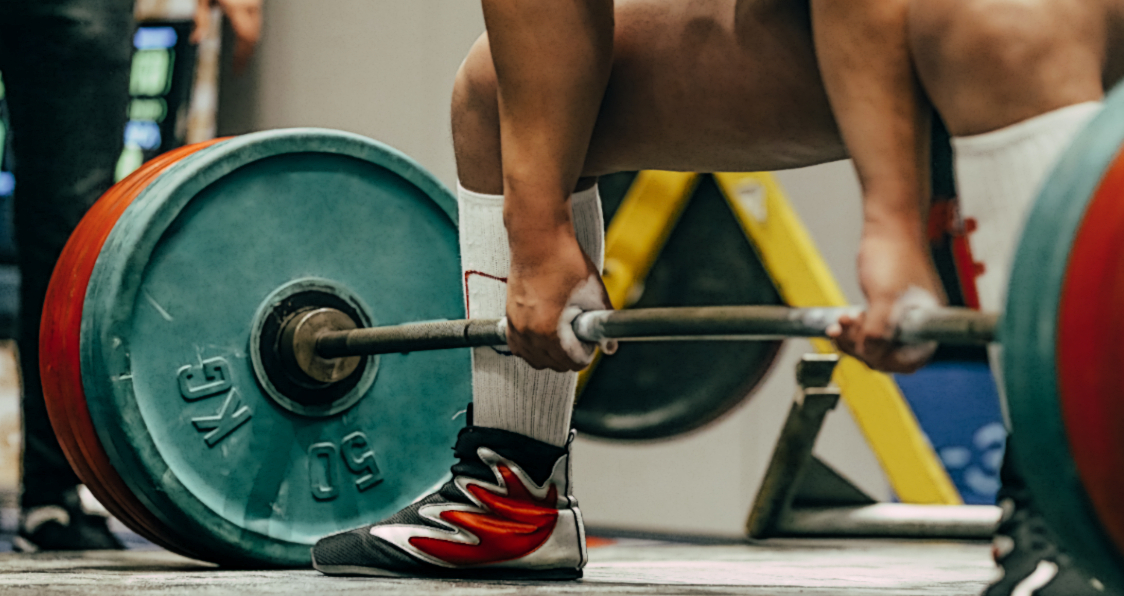
The Ultimate Workout To Build Ripped Hamstrings
Build Jacked Hamstrings With This Workout
Want to know what ripped hamstrings look like? Imagine a few steel chains running under the paper thin skin at the back of your legs. These chains are what are used to lower and raise your torso when you bend forward to touch your toes or in exercises like the deadlifts.
Hamstrings can be a stubborn muscle group to develop. It’s hard to establish a mind-muscle connection with the hamstrings as they’re at the back of your legs and you can’t look at them in the mirror while training.
Lying Leg Curls – 4 Sets 15 Reps
You’ll be performing a combination of isolation and compound exercises in this workout to smoke your hams. The compound lifts help in building strength and size of the muscle and the isolation movements improve the conditioning.
You’ll start off with the lying leg curls (an isolation exercise) to activate and engage your hams. The concentric (upward) movement should be explosive, and the eccentric should be slow and controlled.
Sumo Squats – 3 Sets 12-10-8 Reps
The sumo squats target the hamstring and abductors primarily. Stand with your feet placed more than shoulder-width apart and point your toes outwards. You should go as deep as possible without leaning forward to target your hamstrings optimally.
If you have trouble performing the barbell sumo squats, you can use a dumbbell. Stand on an elevated platform (like aerobic steps) and take the same stance as you would during the barbell squats.
Hold a dumbbell with both your hands while your arms are fully extended towards and perpendicular to the floor. Your arms will remain in the same position throughout the exercise.
Dumbbell Deadlifts – 3 Sets 12-10-8 Reps
Remember the steel chain reference at the beginning of the article? You need to bring it in practice in the dumbbell deadlifts. Place your toes on quarter plates to better isolate and recruit your hamstrings.
Maintain a slight bend in your knees and lower your torso by bending at your hips while pushing them back and focusing on your hamstrings. Keep your back arched and go as low as you can without recruiting your lower back.
Supersets
Standing Hamstrings Curls – 3 Sets 20-15-12 Reps
Standing hamstrings curls are an isometric exercise which helps in building conditioning and fixing any muscle imbalances. If you don’t have access to a standing hamstring curl machine, you can use a leg extension machine.
GHD Hyperextensions – 3 Sets 10 Reps
Superset the standing hamstrings curls with the GHD hyperextensions. The GHD hyperextensions were brought into the mainstream by CrossFit athletes and are an incredibly effective exercise to annihilate your hamstrings.
Barbell Hip Thrusts – 3 Sets 12-10-8 Reps
Barbell hip thrusts are one of the most underutilized exercises when it comes to hamstring training. Although the hip thrusts can help you in building meaty hams, you should avoid them if you have an impending lower back injury.
Place your upper back on a flat bench while you have a barbell placed across your groin. Use padding around the barbell to avoid it from digging in when you thrust. Hold and contract your hams at the top of the movement for a couple of seconds before returning to the starting position.
Header image courtesy of Envato Elements
Do you train your hamstrings and quads on the same day? Let us know in the comments below. Also, be sure to follow Generation Iron on Facebook and Twitter.
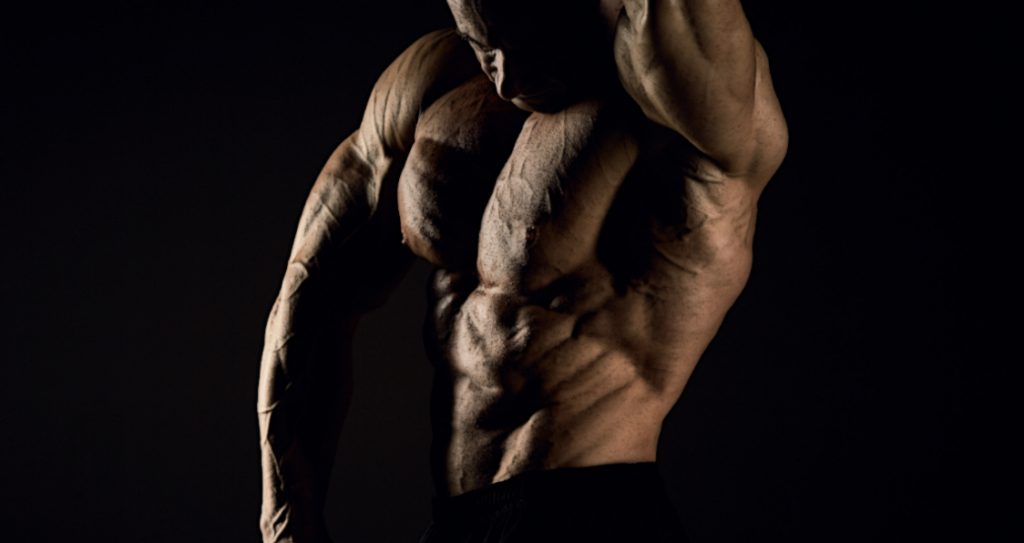
4 Reasons Why The Clean-Reverse Lunge Will Perfect Your Legs
Beyond the squat.
We’ve touched a lot on how leg day is perhaps the most dreaded day in a bodybuilder’s workout schedule. It’s rough, it’s tough, and it can be draining if you’re training correctly. It’s a day that’s meant to separate the men from the boys and can be a truly taxing day on the body. But a bodybuilder doesn’t look at the hard days as something to avoid. Instead, a bodybuilder seeks out the tougher times and uses them as the key to making further improvements to their bodies.
The rule of thumb for leg day is that squats are the key exercise to getting your legs as powerful as possible. It’s a notion that rings true, that’s why everyone is adamant about including the king of exercises into a leg program. But if you want to make the kind of improvements you need to build superior size and definition in your legs, then squats can’t and won’t be the only exercise that’s integrated into your routine.
The Clean-Reverse Lunge is great exercise that can be extremely beneficial to giving you some great leg development. Besides adding variety to your exercise, this exercise can offer the user a number of great improvements to their physique, technique, and form.
So why should you start doing the clean-reverse lunge? Well here are four reasons that could convince you to add this exercise to your workout.
Fixes Imbalances
As a bodybuilder, symmetry is a very important aspect of creating an aesthetic physique. When performing certain exercises like the squat or barbell bench press, compound movements, imbalances can occur if one side is doing more work than the other. The clean-reverse lunge is great because it can fix those imbalances not only in the legs, but the core and upper back as well.
Strengthens Upper Back
Speaking of which, this exercise is also great for strengthening the upper quadrants of the back. By holding the bar in the clean or front squat position you engage your upper body tremendously with this movement. When performing the actual lunge, the time in which your body is under tension ultimately will require you to have good posture which improves overall upper body strength – including your lats and traps. The improved posture will also translate to improving your deadlifts as well.
Strengthens Core
The exercise can also be great for improving your core strength as well. While holding the barbell in the clean or front squat position, your abs will be getting a phenomenal workout. For the same reasons that make the squat such an awesome exercise, the clean-reverse lunge is an exercise that targets multiple muscle groups, not only improving your legs, but the entire body as well.
Knee Friendly
For many people who resent leg day the biggest complaint is that the workouts that they’re performing are killing their knee joints. It’s hard to get through a rough exercise if your knees are racked with pain. The movement of the clean-reverse lunge allows for the shins to remain vertical which takes a great deal of stress off of the knees. It’s an exercise that promotes quad development, but not at the costs of destroying your knees.
Are you a fan of the clean-reverse lunge? Let us know in the comments below and be sure to follow Generation Iron on Facebook and Twitter.
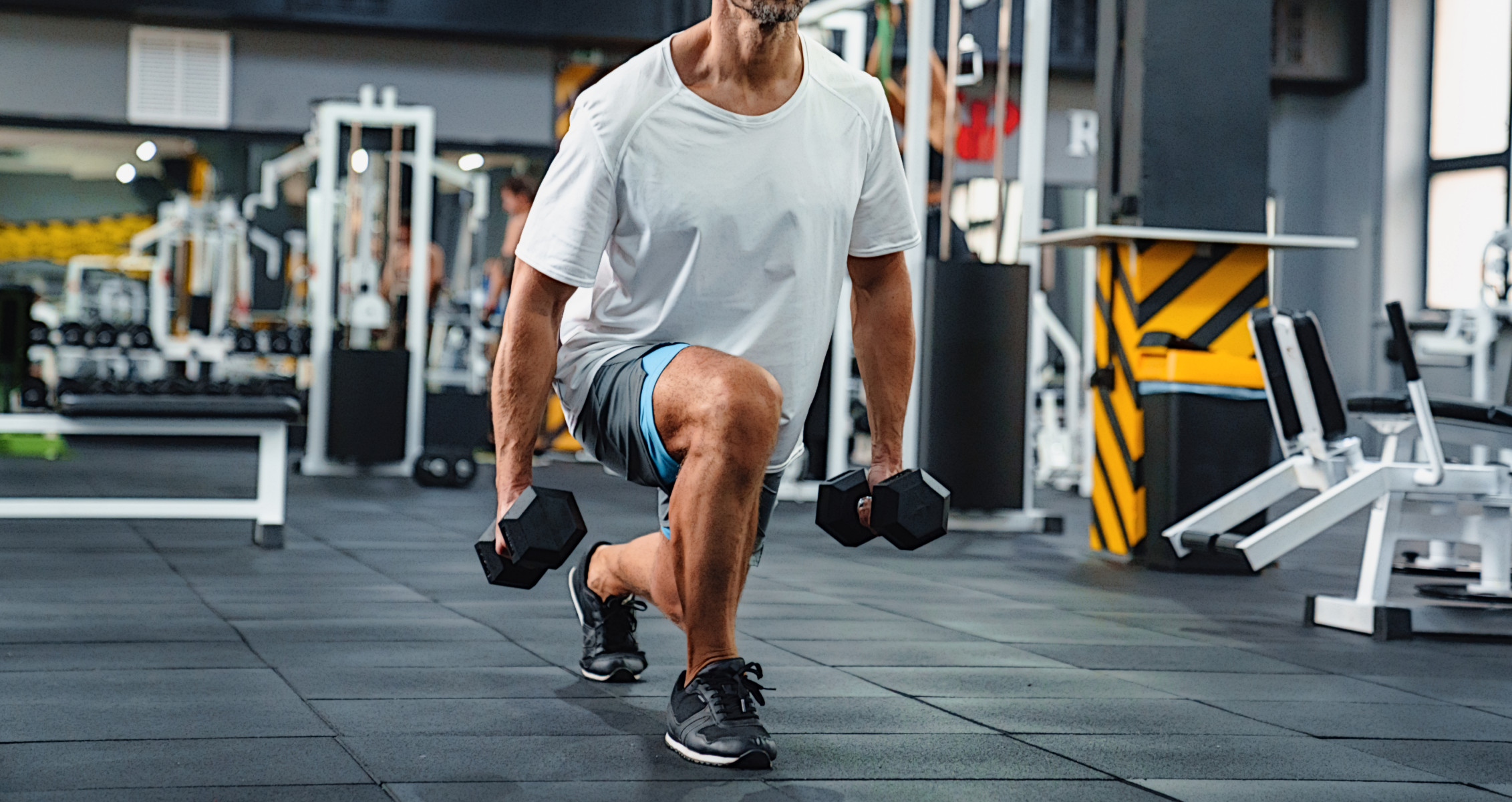
The Most Underrated Leg Exercise
You’ve been going to the gym for years. Your upper body looks alright, but your lower body looks like a malnourished fifth grader. Legs look like toothpicks and your butt is flatter than a pancake.
You’re frustrated with the scrawny legs not filling out your jeans, so you stop skipping leg day and start squatting your face off.
Now your legs are as sore as if a kickboxer nailed them with a few hundred kicks. But even with all this soreness, your lower body doesn’t grow much.
Rough dilemma ain’t it? Squats are great, but there are some common issues with squats that might be limiting your chopstick limbs from becoming tree trunks.
Issues With Squats
Squats are highly affected by human anatomy. Depending on your hip structure and femur/tibia ratios, different squats won’t hit certain parts of your legs with enough stimulation. Potentially you could end up doing a squat variation that doesn’t pair well with your body structure. It’s alos quite common for low back, core, or spinal fatigue to limit squat performance.
You’ve grown accustomed to squats. Most guys squat all the time, but the human body likes to adapt. Something as simple as taking a break from squats and changing exercises might be what you need to grow your legs.
Squats train both legs at the same time. This is problematic because one leg/glute tends to do more work while the weaker side gets neglected or becomes a limiting factor to how many reps you can do.
Squats are technically hard. I don’t care how long you’ve been squatting, it’s actually one of the most technical exercises from head to toe. Most people’s form aren’t as good as they think.
Just because most guys do squats doesn’t mean you have to. You’re different, you not only clicked on this article to improve your ways, but you’ve read up to this point without clicking off even after I told you traditional squats might be limiting your growth, so I applaud you and your determined legs.
Now the exercise you probably need for your lower body muscles to expand like a hot air balloon are split squats. They’re effective, underrated, and you’ve probably been avoiding them because they also suck, but mechanically they should grow more muscle for a many people.
Below are a few different variations. For all of them keep a neutral spine, brace your core, and have a slight lean forward. The more vertical your front knee is, the more you’ll hit your glutes. As the knee travels forward, you will hit slightly more quads, so it’s up to you how you allow your knee to move. That being said, there’s nothing wrong with letting your knee travel past your toes. That’s a myth that doesn’t seem to vanish.
Anyways, a more forward lean will hit your glutes more while a more upright torso will hit your quads more. Hamstrings don’t really get trained with split squats, but they do contribute more than bilateral squats.
Your adductors also get some solid stimulation from spilt squats.
Regardless move steady and at a controlled forceful tempo on the way up and a slow and controlled tempo on the way down.
While there are many variations of split squats, they only differ in range of motion and weight placement. The general mechanics of all split squats are the same.
Split Squat Mechanics
Start in a comfortable stance. Your feet should be on separate lines instead right behind each other like walking on a tight rope.
Lower yourself as the front foot stays flat. The back heel should come up. You can tap your knee lightly on the ground or stop a bit short. I prefer the latter.
Maintain stability and keep your hips neutral. Don’t let your knee collapse inwards. Let it track towards your toe naturally. If your knee goes past your toes, that’s perfectly fine as long as your front foot stays planted on the ground.
As you come back up, be sure not to round your back. Keep your spine neutral.
DB Split Squat
[embedded content]
Goblet Split Squat
[embedded content]
Barbell Split Squat
[embedded content]
DB Bulgarian Split Squat
[embedded content]
Barbell Bulgarian Split Squat
[embedded content]
Front Foot Elevated Split Squat
[embedded content]
Benefits of Split Squats
Split squats allow you to train your legs unilaterally which helps with muscle and strength asymmetries and allow your nervous system to focus on one leg at a time. It’s arguably more natural too as you walk and move through daily life one leg at a time.
As for the main benefit you’re after, split squats will make your lower body look and feel epic. The strength gains are beastly and the muscle growth is powerful (yet painful). If you’re not used to them, you will likely be sore for a few days.
Lastly, they’re also great for various sport performance from cycling, soccer, sprinting, or even mixed martial arts.
That being said, they’re perfectly useful and still extremely beneficial for everyday population looking to stay fit and not allow their butts to sag as they approach 40 or 50.
Programming
To program these start by choosing a split squat variation. The Bulgarian and barbell variations will be harder, so I would avoid those if you’re a beginner. For your workout you can should do them for 5-12 reps per leg for 3-4 sets. If you do them as your main leg movement, do them at the beginning of the workout and use heavier loads. If you do them after doing your typical traditional squats, use slightly lighter loads and aim to knock out more reps.
Regardless be sure to add more weight or do more reps over time and the muscle tissue surrounding your booty and quads will explode in growth. You’ll fix the strength difference between legs, smash through a plateau, and have legs a centaur would be proud of.
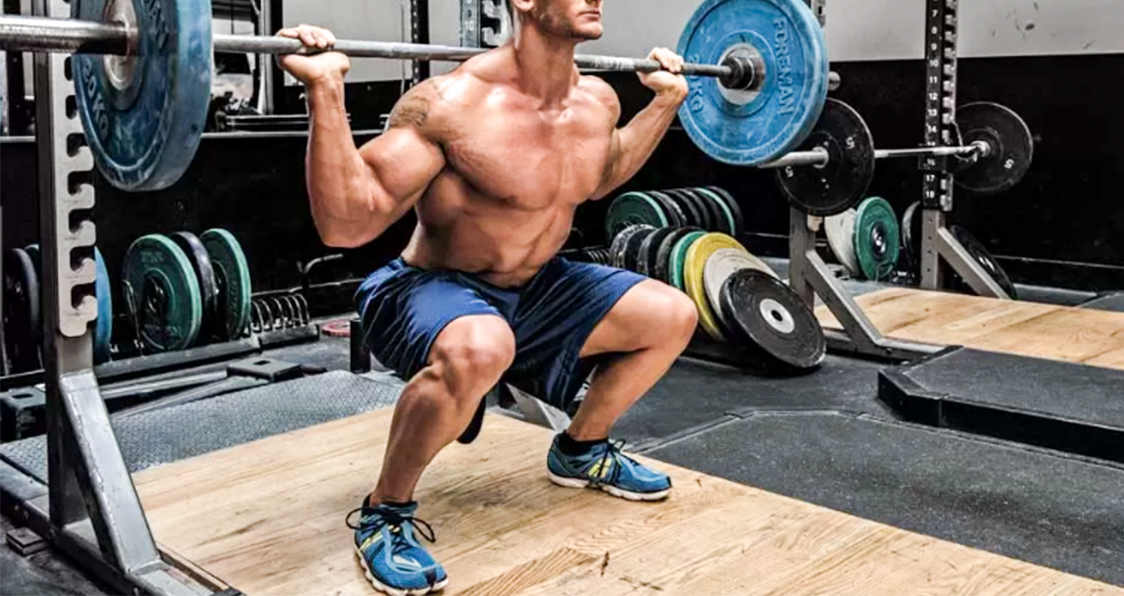
This Is How Deep You Should Squat
Which one gives you more gains? The Deep squat or regular parallel squat?
When it comes to leg training there seems to be a constant emphasis on knee pain and protecting the joint from damage. And why the hell not? The knees are perhaps the most important body parts to maintain for any athlete, serious or otherwise. Knee health is paramount for peak performance.
Speaking of which, if you want to wreck shit in the gym and have monster wheels – then what’s the one workout you’d look to? If you said anything but the squat, you deserve a punch right in the jaw. The squat is the number one workout for a reason and it has been said before. But there’s another underlying debate that many squat experts wonder about. Which is better, deep squatting or regular squats?
Deep Squats Vs Standard Squats
If you ask most people about squats and knee health they’d tell you that performing the movement too deep will damage the front knee joint, but it seems like that’s a misconceived notion. Studies have proven that a deeper squat will prove to provide stronger glutes, hamstrings, calves, and quads.
But that’s not all. It seems like deep squats also provide increased knee stability. The two major ligaments in the knee, the ACL and PCL, are less strained the more the knees are bent. What’s that mean for the deep squat? It seems that the deeper the squat the less pressure is put on the knees and ligaments.
So does that mean you shouldn’t bother with the regular parallel squat? Not at all. If you’re someone with chronic knee pain then it would probably be beneficial to stick to the parallel squat. Despite the fact that deep squats may prove beneficial to your knee health in the long run, it can be risky if you’re not used to performing the action.
Parallel squats are still great for your legs and knees when performed correctly, so truly you can’t go wrong. By having form and control while performing either squat, you’re sure to see some awesome results.
No matter which squat you prefer it’s always best to keep the basics in mind. If you want to come out the other end with some strong and well defined legs then you better focus on form. Squatting uses multiple muscle groups, not only in your legs but your core, back, and shoulders as well.
If you want to jump into deep squats, then avoid the heavy weight in the beginning until your form is sufficient. Once that’s out of the way then pack on the weight and watch your legs grow. And of course, don’t ignore knee pain – once you feel something isn’t right, stop putting pressure on that knee and go get it checked out.
So which type of squats do you use to get your wheels in fighting form? Let us know in the comments below and be sure to follow us on Facebook and Twitter.
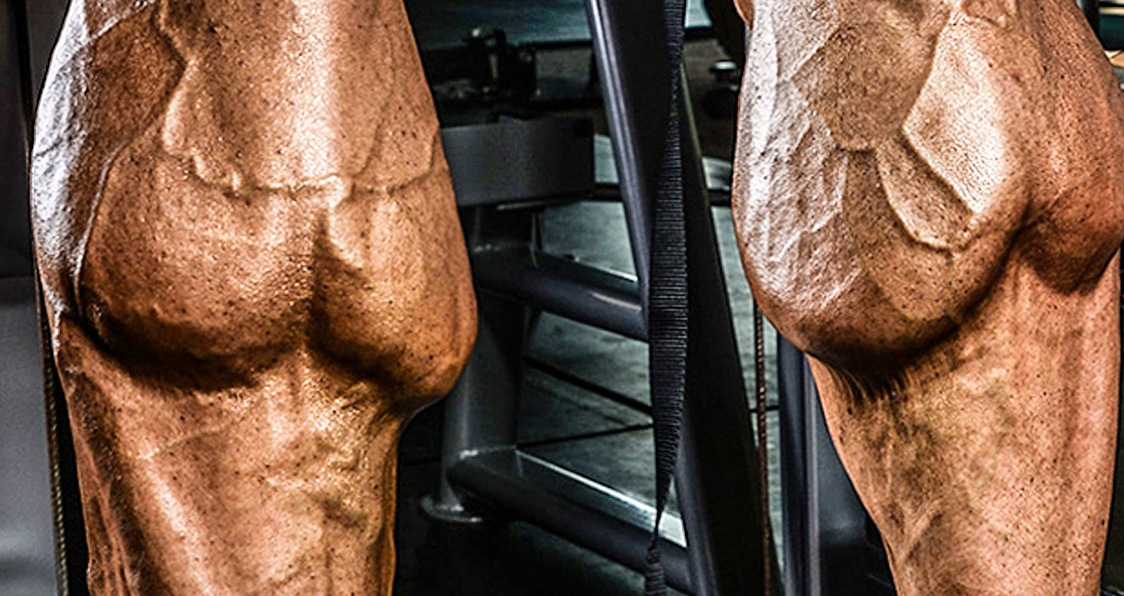
3 Fool-Proof Strategies For Bigger Stronger Calves
Turn those calves into cows.
When most people think of bodybuilders they imagine shredded abs, a broad chest, and ripped arms. Just an overall massive upper body akin to a superhero. But that would only be half the story. Many people who first begin bodybuilding are so obsessed with building their upper bodies that they forget about developing their legs as well. Unless you want to be massive with chicken legs, then you’re going to have to work your lower half.
But even when people do move on to training their legs they focus a great deal on building up their quads and their hamstrings rather than every bit of the leg. The problem is that in order to build a strong foundation you’ve got to have a bottom up approach. That means if you want to own some strong legs in shredded shape then you’re going to have to build up the lowest placed muscle on your body.
The calves are just as important to building symmetry as building up well defined forearms. No one wants 20 inch biceps with some puny forearms. Your arm would look more like a chicken leg than a vascular piece of muscle. The same goes for the legs. Having calves that are both big and strong will ensure that your body’s proportion will stay in order.
Not even Arnold Schwarzenegger could rest on his laurels when it comes to calf definition. It was a body part that he neglected and because of that he wasn’t placing as high as he wanted despite an impressive upper body. Of course, he changed that quickly – and you should too. If you want to be a pro or if you simply want to have a symmetrical form then you’re going to need impressive calves.
If you’re interested in building up some bigger stronger calves then take these valuable strategies under consideration.
High Reps (Muscle Endurance and Strength)
The calves are a multifunctional muscle group that can be built up not only for endurance, but for strength as well. Calf raises isn’t the only exercise that can be performed for gains in the muscle group, but it’s perhaps the most focused exercise for the particular area. The high rep strategy requires you to perform upwards of 30 reps within 2 sets and can prove to be the recipe to giving your calves some great muscle endurance and aid in bolstering your heavy lifts on leg day.
One Legged Calf Routine
The benefits of one legged calf raises are pretty apparent. By performing the exercise one leg at a time you’ll ensure that you’re not only making some major calf gains, but also increasing your balance and overall leg development. That same balance under stress can translate to other lifts that require sturdy legs like the squat.
Inner and Outer Calf Raises
It’s possible to work the calves without this method, but by focusing on specifically building the inner and outer parts of your calves you’ll be able to sure up any lagging points found in the muscle group. By performing calf raises in the pigeon toes style for the inner calves (toes point towards each other, heels out) or duck feet style for the outer calves(toes pointing outward, heels inward), the entire muscle group will be worked at every angle.
What’s your favorite exercise to build your calves? Let s know in the comments below and be sure to follow Generation Iron on Facebook and Twitter.
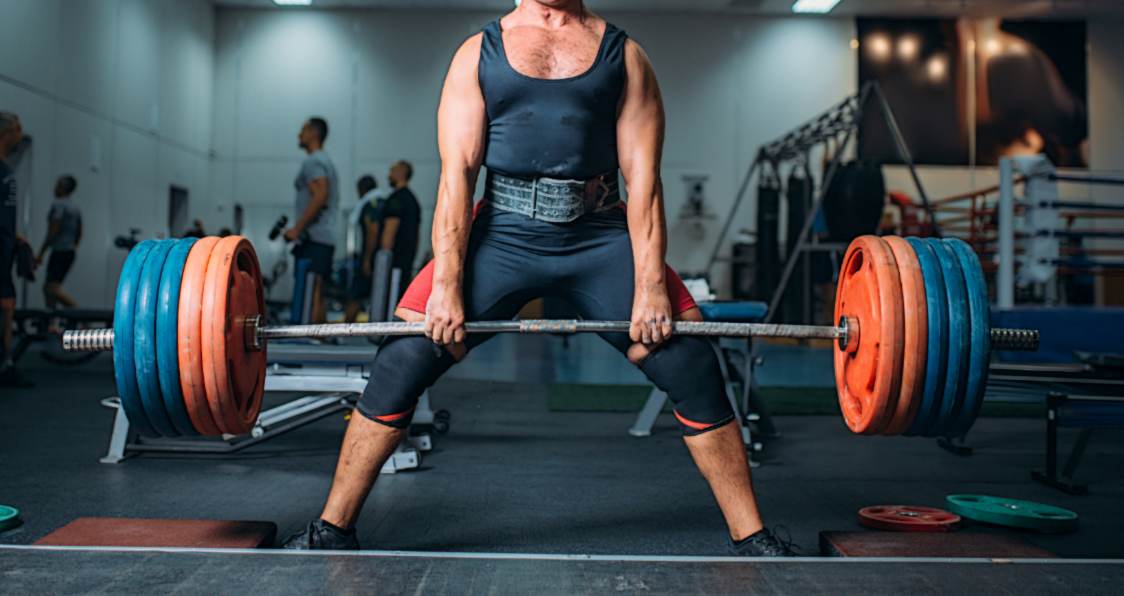
How To Deadlift Without Passing Out
Don’t fall face first into the weights.
We’ve all seen it before. Guys passing out from doing heavy deadlifts. It’s a phenomenon that has left many viewers holding their ribs in mind numbing laughter while leaving others scratching their heads. What the hell causes that to happen in the first place? Is it the mental stress of performing the lift or is there some other cause behind this strange occurrence?
When you’ve been lifting for a long time you’ll notice that guys in the gym usually tend to train the deadlift considerably less than they do the bench and the squat. At least they do when they start going heavy. The amount of stress benching and squatting puts on the body pales in comparison to how much deadlifts can take out of you. So what makes deads so different than the others?
Well for one, because of the nature of the lift, the fact that it’s a pulling exercise, the lifter is able to haul more weight than what you’d expect out of the bench and the squat. If you took a look at your own numbers you’d probably realize that your deadlift is in some cases double the amount of what you bench. It’s the reason deadlifts are trained 3 to 4 times a month as opposed to being apart of a lifters typical back routine 3 to 4 times a week.
Despite the fact that deadlifts are awesome for back gains they’ve proven to be dangerous. Here are some tips that every lifter should consider when performing this powerful exercise.
If you want to get even more in-depth, make sure to check out Generation Iron Plus for online bodybuilding courses, training guides, nutrition plans, and more. It’s the ultimate tool to become the best bodybuilder version of yourself.
1. The effect on the central nervous system
The stress that deadlifts put on the central nervous system is substantial. Performing the lift successfully can be a daunting task and be taxing both physically and mentally. You’re lifting the bar from a static position which requires the lifter to generate a substantial amount of strength. Be mindful of the amount of stress you’re putting your body under.
2. Rest Periods
Recovery is also paramount to performing this exercise consistently and frequently. Rest intervals are important to build up enough strength to perform the action again and if you rush things you can find yourself passing out from the sheer fatigue and pressure.
3. Be mentally prepared
It may seem a bit self explanatory, getting your head in the game to perform a heavy lift, but it’s essential that when you’re performing the deadlift that your mind is completely focused on the task. Where performing a back squat virtually depends on you completing the action or being crushed under the barbell’s weight, the deadlift requires you to do the lift from a static position. You’re mind forces you to complete the squat or face serious injury giving you a mental edge. When you perform the deadlift you have to approach the bar with a positive attitude and the mental fortitude to not just try and lift the bar, but know that you’ll lift it without a doubt in your mind.
The deadlift can be mentally and physically taxing, but if you have an iron will and play things smart then you’ll be performing the deadlift with ease in no time. While there is no sure fire miracle tip that will 100% prevent you from passing out – keep these three key elements in mind every time you go into the deadlift.
What are your thoughts on the deadlift? Let us know in the comments below and be sure to follow Generation Iron on Facebook and Twitter.
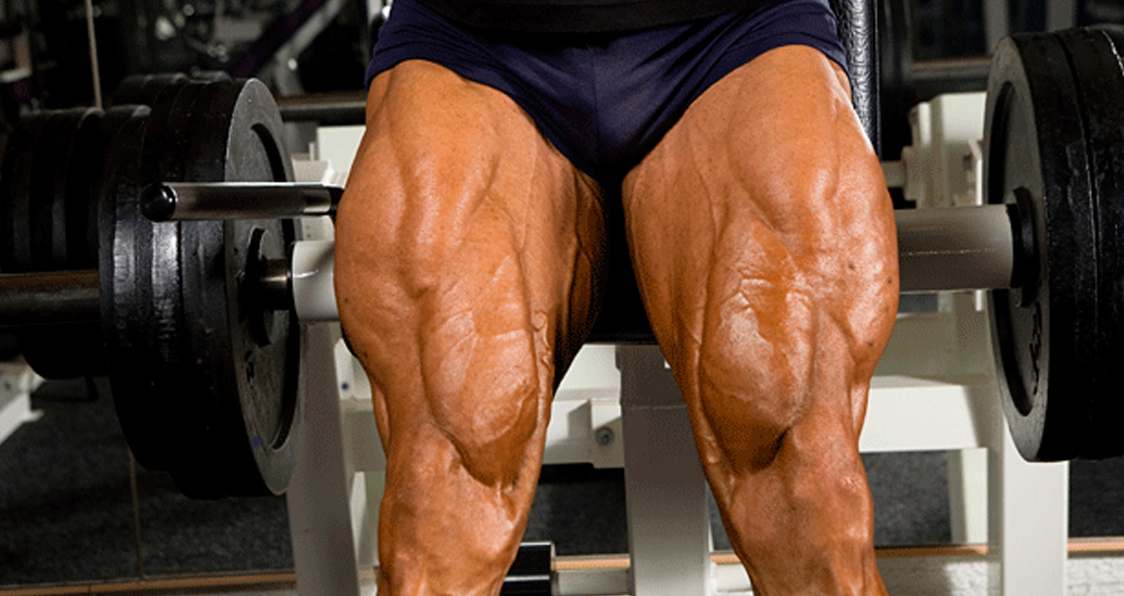
The Key To Massive Legs
Raise your very own quadrasaurus.
Having gigantic ripped legs are things of legend. Sure, everyone loves having massive biceps and chests – but that’s the obvious choice. When you see someone with truly massive legs it’s a sight to behold.
But why don’t you have legs like that? (Unless you do, then congratulations!) We’re here to help you out with that. Many people tend to take it easy on their leg workouts or even skip it all together. This is mostly because legs are one of the harder areas to make look lean and massive.
But instead of giving your legs the silent treatment, here are some ways that you can improve your leg workout game and hopefully build some truly massive muscles.
Your Deadlift and Squat Form Really Sucks
Let’s start off with a simple one. Almost everyone knows that deadlifts and squats are essential workouts for bodybuilding and a great way to strengthen your legs. But it’s not that simple if you are slacking off and screwing up your form. If you curve the crap out of your back on squats or slam the weight down onto the floor for every deadlift rep – you are doing something wrong. This leads to ineffective muscle building. It leads to an inflated sense of how much you can lift. It leads to weak legs. The opposite of what you want.
Use Isolated Movements as Accessory Exercises
This is where a lot of people make mistakes. All of those machines like Leg Extensions and Leg Curls should not be the main focus of your leg workout. These are not go to machines that will make your legs look like bulging monsters.
But don’t ignore these exercises completely. You can work with these machines at high repetitions and medium resistance to really isolate and tone your quads and hamstrings. While the compound exercises will really bulk up the muscle – these exercises will perfectly tone them into incredible definition. Think of these as accessories and not the main meal.
Make Sure to Work Unilaterally
No matter who you are, almost everyone is either right or left dominant. This goes for any body part. This means that when you work your muscles one is always doing a little bit more work than the other.
In order to prevent this, you need to include unilateral workouts into your routine. Exercises like lunges, single leg squats, and single leg deadlifts are surefire ways to make sure your muscles develop evenly.
We suggest that you perform these exercises at the beginning of your workout rather than the end. It’s very common to see these kinds of exercises as something you just sort of tack on at the end of the day. This leads to a half-hearted performance on your sets. Try to hit these exercises while you are fresh to improve the balance between your muscles.
Exercises You Should Add to Your Arsenal
With all of these helpful tips to help you move towards bigger and stronger legs, let’s put all of the essential workouts that you should use in your workout arsenal. Try mixing and matching these different exercises to create something that really maximizes your muscle gains.
Major Exercises
Squats
Traditional Deadlifts
Stiff Leg Deadlifts
Sumo Deadlifts
Romanian Deadlift
Power Clean
Single Leg Squats
Single Leg Deadlifts
Accessory Exercises
Lunges
Leg Extensions
Leg Curls
Standing Calf Raises
Are you a master of meaty legs? Share your tips with us in the comments section below. You can also give us a shout out on our Facebook and Twitter pages too.
